At the start of the pandemic, people were being let go as businesses needed to become lean in order to survive. With COVID becoming part of the new normal, the working environment across the globe is shifting. An increasing number of professionals are now searching for jobs that offer hybrid or fully work from home options, even leaving their current positions to do so.
What is Remote Staffing Retention?
Remote staffing retention or just employee retention is the goal of keeping talented employees and reducing turnover rates. The general strategy is to provide a working environment that allows people to grow, providing inspiring employee engagements, and offering a competitive salary. The pandemic is causing this strategy to change as workers are realizing what is important to them.
A Change in Mentality
Due to a number of factors, employees are burning out from their jobs. The pandemic set off a chain of events that began this change. Some of the changes happened rather quickly, like people wanting to work at home to avoid spreading the virus, while others took time to set in, such as burning out.
According to a Microsoft report, the workplace is transforming, burnout rates are increasing along with the demand and search for hybrid work. With a majority of the people surveyed saying they feel overworked and a large chunk of them feeling that their employers don’t care about work-life balance, compounded by the stress of COVID, it’s not a mystery why they’re burning out.
After experiencing a work-from-home setting, people began to question why they had to work in the office full time. With less commute time, more time for themselves and loved ones, and still completing the required tasks, people started to want this set up to be permanent. Of course, a larger majority of people want a hybrid setup, where they still get together with their team for meetings but can still spend a majority of their productive time at home. Working from home has made many people feel included in their company as all the meetings and interactions happened online in small controlled groups. This has caused some to feel isolated however as they physically don’t get to interact with their team, hence the majority of people seeking hybrid work setups.
As some companies required their employees to go back to the office to work, people began to quit. The general thought of “why should I have to work in the office again and endanger my family when other companies are allowing work from home?” began to spread. According to the World Economic Forum, “managers are now navigating the ripple effects from the pandemic, as employees reevaluate their careers and leave their jobs in record numbers.” As a large number of employees worldwide aren’t content with going back to how things were, things have to change or the only companies that will thrive are those who adapt.
Retaining Talented Staff Post Pandemic
“One-way companies can avoid today’s so-called “Great Resignation”, is to invest in building brands that are as compelling internally as they are externally.” Part of this is creating and living by a mission statement that others can get behind. More professionals are moving over to a company with a good brand message, one that upholds what they stand for.
Typically these types of businesses are the ones that have a culture of caring for their people. Higher levels of employee engagement are also sought after by employees, in fact, they stand out above the rest, maintaining their high-level staff as well as drawing in other professionals looking for a more fulfilling career or just a company that cares about their employees. Employee engagement helps build and strengthen relationships with staff. Employers or other top-level company members will be able to understand their employees better. If done correctly, you will also foster loyalty and trust. High levels of engagement help staff know exactly where they stand in a company, meaning they know how far they can go down a career path, if they can make lateral moves into different parts of the company, etc. Regular communication with staff lets them know you care about their well-being, it also offers the chance to acknowledge any achievements they might have accomplished. Employees want to be treated with respect and also like the open lines of communication working both ways.
These companies have adopted a hybrid model approach, where their employees are allowed the flexibility to work from home and come to the office for certain tasks, such as big meetings. This has helped retain high-level employees as well as attract new talent. Accenture released a research report stating that “83% of the people they surveyed want some type of hybrid work model.” Though this survey sampled a portion of the market, its sentiment can be felt all over. US companies are starting to feel the effects of this newfound work-from-home mindset as their employees are quitting in order to move to work at places where they’re allowed to fully work from home or some hybrid variation. Jim Dunn, the chief people and culture officer at Atrium Health, stated that “…they’re allowing people to continue to work remotely right here in Charlotte…Now the entire country is a competitor for talent.” The companies that have made the switch to hybrid/fully remote work have the advantage and those unwilling to make a change will continue to feel the effects as people living in one state/country can work for someone halfway across the world doing pretty much the same job as before but with the ability to do it from home.
Wrap Up
The current work climate is shifting and businesses need to adapt in order to stay competitive. All it takes is a singular company to disrupt the status quo and allow a hybrid work set up and they can snatch up quite a large number of talented individuals from their competitors. Staying true to your core values and openly communicating with your employees goes a long way, so much in fact that it will help your recruitment efforts as well. Be aware of what your employees are saying, get HR more involved with them to get a feel of what’s going on. Stay on top of what the people want in order to stay competitive in your industry.





